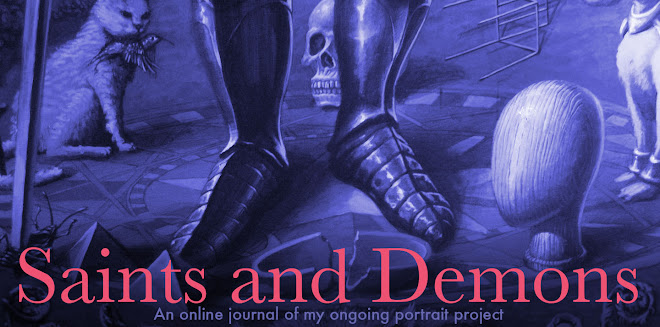
I started on the first day on the armored leggings, boldly putting in some strong blacks. In the past I've snuck up on real dark darks, layering watery layers, but life is too short, and so what I know will end up black I just made black. I'm painting this in grisaille, all in shades of gray, so I'm defining the form with dark grays where the form is in shadow and light grays, leading to white, where the form is in light. The armor, dark and reflective, is all about the extremes of light and dark, and it was fun to establish those early on. And I liked setting her on the ground as a beginning.
I'm layering the paint thinned purely with water. I use to love using Golden's matte medium for creating transparent washes, but I've come to feel it's seductive surface is not as controllable.
You can see a glimpse of my studio in the background. The Met Museum bag hanging on the closet doorknob has my tax-related receipts in it. Just so you know my filing system.






 Or St. Lucy, strangely proud of her gouged out eyes on a plate, her 'spiritual' eyes restored to her.
Or St. Lucy, strangely proud of her gouged out eyes on a plate, her 'spiritual' eyes restored to her.
